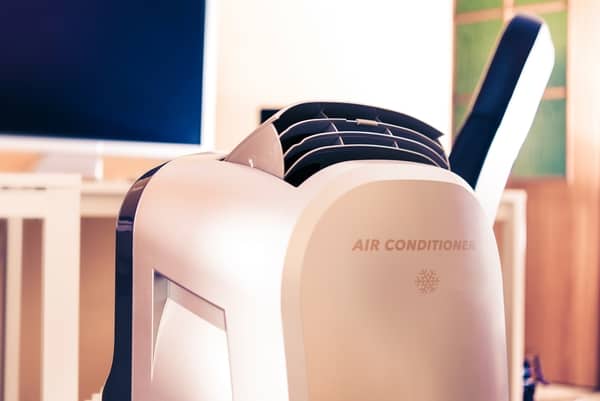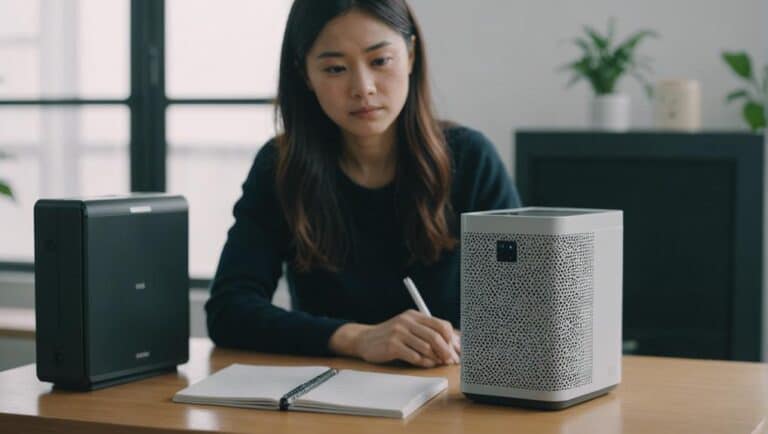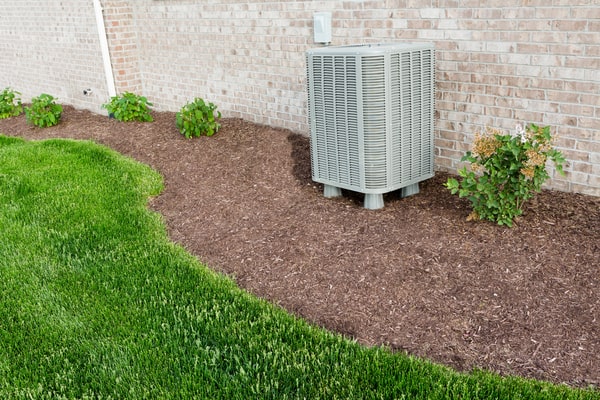Efficient Venting Techniques for Portable Air Conditioners: A Comprehensive Guide
As summer approaches and temperatures begin to rise, many households turn to portable air conditioners for relief. However, without proper venting techniques, these devices can quickly become inefficient. If you’re looking to get the most out of your portable air conditioner this season, it’s critical to understand the importance of proper venting and how it impacts both cooling power and energy efficiency.
In this comprehensive guide, we’ll explore everything you need to know about efficient venting techniques for portable air conditioners so that you can stay cool all summer long while minimizing energy costs.
Understanding the Basics of Portable Air Conditioners
Portable air conditioners are a great solution for keeping rooms cool during hot summer months. But, they need proper venting techniques to maintain their cooling efficiency. The key component of any portable AC is the exhaust hose because it vents hot, humid air out and lets in cooler outdoor air. If the hose is not connected properly or does not lead directly outside, then your AC will be inefficient as heat gets trapped in the room reducing its ability to effectively cool down.
The most efficient method of venting portable air conditioners involves installing an exhaust hose directly leading outside through a window or wall-mount. Other options include using a drop-ceiling or connecting multiple hoses that combine with an adapter unit into one port which can lead outdoors too. It’s important to regularly clean filters and inspect the exhaust ports and hoses also before starting up or maintaining operation daily. By following these basic guidelines you’ll maximize both cooling power & energy efficiency while minimizing costs at home despite weather conditions throughout each season!
Importance of Proper Venting for Optimal Cooling
Proper venting is critical for portable air conditioners to function at their maximum capacity. Inadequate ventilation can cause the unit to overwork, leading to higher electricity bills and decreased efficiency. Since portable ACs are designed to remove hot air and humidity from a room, proper ventilation ensures that these by-products are promptly evacuated.
Furthermore, proper venting helps maintain healthy indoor air quality by preventing mold or mildew growth caused by stagnant water buildup inside the unit. It also prevents carbon monoxide poisoning since this gas can build up if the exhaust system malfunctions due to improper ventilation.
In conclusion, optimal cooling performance and energy efficiency depend on proper venting of your portable AC device. Understanding how it works and taking steps to ensure effective airflow will help maintain a comfortable indoor environment while reducing utility expenses throughout the summer months.
Types of Venting Techniques for Portable Air Conditioners
When it comes to venting your portable air conditioner, you have a few options. The first is a traditional window vent kit, which requires the user to fit an exhaust hose from the unit into a window opening. This method is effective and easy to install, but it may not be suitable for all spaces or windows.
If your space doesn’t have an appropriate window for venting, there are other options available. One popular choice is a drop ceiling vent kit, which allows the unit’s hose to be installed through a suspended ceiling grid. Another option is an extended length exhaust hose that can be directed out of any small opening in the wall or floor.
No matter which type of venting technique you choose, it’s essential to ensure that hot air is being expelled from the room effectively. Without proper ventilation, your portable air conditioner won’t function efficiently and could lead to costly energy bills down the line. By taking advantage of efficient vents like these methods above combined with best practices like keeping doors closed and using curtains during peak sunlight hours —you’ll enjoy comfortable temperatures without breaking the bank this summer!
Step-by-Step Guide to Installing a Venting System
When it comes to installing a venting system for your portable air conditioner, the first step is to determine where you want to place the unit. The ideal location will be near a window or door so that hot air can be easily exhausted outside. Once you’ve found the right spot, take measurements and make sure that there’s enough space for both the AC unit and the venting hose.
Next, install any included window panels or adapters according to their instructions. Then attach the venting hose securely to both the exhaust port on your air conditioner and the opening in your window panel or adapter. Make sure all connections are tight and free of leaks, as even small gaps can reduce cooling efficiency.
Finally, turn on your portable AC unit and adjust settings as needed. Regularly check that all seals are secure throughout use, as loose connections may not only hinder proper cooling but could also lead to safety concerns like carbon monoxide poisoning if outdoor airflow is blocked via improper venting installations.. With these simple steps in mind though – efficency should improve greatly after following installation steps correctly allowing cool fresh air despite climbing temperatures outdoors during summer months with peace of mind knowing one has ventilated properly making living spaces protected from hazardous pollutants.
Maintenance Tips for Keeping Your Venting System Efficient
Maintaining your venting system is crucial for ensuring that your portable air conditioner stays efficient during the hot summer months. One simple maintenance tip is to regularly clean or replace the air filter in your unit. This helps prevent dust and debris from clogging up the vents, which can cause reduced airflow and decreased cooling power.
Another important step is to check all of your unit’s ducts for leaks or blockages. Any restrictions in airflow can make it harder for the device to maintain a comfortable temperature, leading to higher energy bills and reduced efficiency over time. By sealing any gaps with foil tape or repairing damaged tubing, you can help ensure that cool air flows freely through your space without losing its chill along the way. Ultimately, by taking these steps before installing your portable AC unit and following them regularly throughout its lifespan, you’ll be able to enjoy consistent cooling performance all season long while keeping costs under control.
Troubleshooting Common Venting Issues
When it comes to portable air conditioners, proper venting is a crucial element that homeowners often overlook. The primary function of a vent is to release hot and humid air generated by the AC unit outside of your home, making way for fresh cool air. However, when improperly installed or maintained, vents can lead to several common issues such as decreased cooling capacity or increased energy consumption. Troubleshooting these problems requires adequate knowledge of the parts and components making up your AC system’s exhaust kit.
Some common issues with venting include leaks in the vent hose or incorrect installation angles leading to hot spots within your space and inefficient energy use patterns. Noisy fans due to partial blockages may also affect performance by reducing airflow through the ducts resulting in longer operating times than necessary; using a properly-sized hose that fits tightly onto both ends should help reduce this problem if it arises. In conclusion, properly maintaining and troubleshooting a heating/cooling system’s annoying “vents” goes hand-in-hand with how well its running and prolongs its life expectancy while providing maximum efficiency factors in return.
Energy Efficiency and Cost-Saving Measures for Portable Air Conditioners
Energy efficiency and cost-saving measures for portable air conditioners are crucial to maintain optimal cooling performance while minimizing energy consumption. Proper venting techniques include ensuring the exhaust duct is securely attached to both the unit and the window, as well as sealing any gaps around the window frame with weather stripping or foam tape. An unobstructed airflow path is also essential, which means avoiding kinks or bends in the ductwork that can hinder ventilation.
In addition to venting, regular maintenance such as cleaning or replacing filters can improve your device’s energy efficiency and cooling capability. Using a programmable thermostat allows you to set temperature schedules based on your daily routine rather than continuously running throughout the day when not needed. Investing in an Energy Star certified model ensures that your device exceeds industry standards for efficient operation, saving you money on electricity bills over time.
By implementing these energy-efficient and cost-saving measures, homeowners can extend their portable air conditioner’s lifespan while reducing their carbon footprint and overall expenses associated with cooling during hotter months.







One Comment